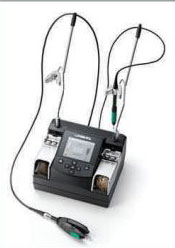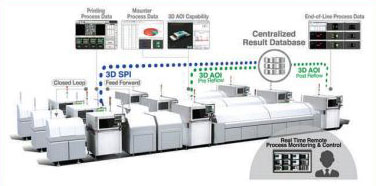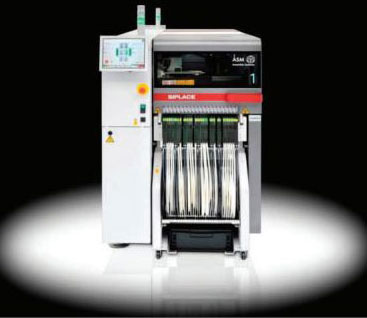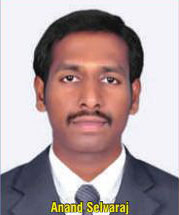The age of smart factories is here already. And it brings with it a promise of transforming manufacturing productivity and efficiency. Dropping prices of sensor technology coupled with an ability to harvest previously hidden data and an all-pervasive Internet signals the transformation of fabrication, encompassing everything from cups to cars. An automated and advanced manufacturing facility— i.e., a smart factory—brings a highly advanced, safe and efficient approach to the manufacture or production of goods.
Smart factory market poised for a boom
In the digital manufacturing era, the gap between the digital and physical world is closing fast, and being replaced by an entirely new way of manufacturing. Future Market Insights (FMI), in its report, has delivered key insights into the global smart factory market for 2015-2025. FMI’s report states that the global smart factory market was evaluated at more than US$ 51 billion in 2014, and is projected to register an impressive growth at a CAGR of 13.3% through 2025. Surging interest in advanced manufacturing, soaring demand from key verticals, and increasing inclination of manufacturers towards becoming consumer-centric are primarily driving the growth of the global smart factory market. Some major trends observed in the market include rising use of information technology, progressive usage of collaborative robots, robust adoption of the Industrial Internet of Things (IIoT), and increasing investment in manufacturing plants.
Leap in IT’s abilities to drive smart factories
A convergence of greater technology power, machine thinking, and artificial intelligence has triggered complete transformation of manufacturing industry, unleashing the super-powered smart factory, and facilitating the emergence of Industry 4.0—the world of cloud computing, IoT and cyber physical systems. While elements such as early Smart Factories Will Transform Manufacturing Capabilities INDUSTRY WATCH automation, assembly lines, and steam power drove the earlier three industrial revolutions, newage machine intelligence is expected to power the fourth. Like the earlier revolutions, an exponential leap towards neverbefore- seen productivity levels is on the cards with Industry 4.0. A leap in the ability of information technology is driving forward the utilization of robotics and sensors on the smart factory floor, propelling Industry 4.0. Sensors, durable and inexpensive, serve as key components in the operation of manufacturing floor’s as ‘ears and eyes’—collecting information and ensuring synchronicity in the working of machinery, power conservation, and the operation of systems in optimum conditions of light, humidity, and temperature. The glut of low-cost sensors in the market indicates that smart factories— be they supply chains, stores, and more— have great potential for and capabilities in continuous creation of products in optimized environments.
Koh Young Technology’s Ksmart Solution in anticipation of the ‘Smart Factory’ of tomorrow
Electronics manufacturers are constantly seeking better ways to optimize, efficiently monitor, and control their manufacturing processes. Koh Young Technology’s Ksmart Solution, a portal to Industry 4.0, helps Koh Young customers achieve fully automated process control in anticipation of the ‘Smart Factory’ of tomorrow. Automated control with Ksmart delivers the immense benefits of true process optimization in real time; it boosts productivity while minimizing costs and ultimately builds a better bottom line. The factory of the future begins with the ‘Smart Factory’ of today. Once a futuristic concept, but now a developing reality, Industry 4.0 is emerging from the chaos of creation and its development is being driven on many fronts and in many ways. In the vanguard of this quantum leap forward are innovations including Koh Young Technology’s Ksmart Solution, which helps customers achieve the most effective process management for flexible, agile manufacturing. Industry 4.0, after all, will only be realized with a totally integrated and optimized manufacturing process. Total integration enables communication, which is the literal nexus of the ‘smart factory’. But it isn’t simply enough to drive the production process. For true Industry 4.0 productivity and efficiency, the process must be optimized as well, and communication is the key, linking the production elements together with feedback from inspection, measurement, and quality recognition and analysis systems. As the global No. 1 leader in true 3D measurement and inspection (AOI and SPI), the company has learned to apply true 3D measurement and defect detection information to benefit the entire manufacturing line, and Ksmart Solution is the advanced system that ties everything together with ‘Smart’ process analysis plus fast and easy remote monitoring and control of the process in real time. With the solution, a factory manager can monitor defects, analyze root causes, and apply changes to inspection programs ‘on the fly’ as needed even from remote locations. An increasing number of industrial manufacturers are adopting automation for ‘Smart’ factories to be in place to maximize production efficiency and enhance yields. But what is Ksmart Solution and how does it work to benefit the factory manager? Koh Young Technology’s Ksmart Solution is an integrated, comprehensive productivity and process control center. The success of the implementation results from the convergence of new company software technologies working in concert with 3D AOI and SPI capabilities. These technologies include the Ksmart Remote Monitoring System (RMS), Ksmart Link, and others.
Advancing to Industry 4.0 on local,
INDUSTRY WATCH global levels In addition to carrying out realtime analysis of defects with SPC@Ksmart, some other functions of the Ksmart Solution include the following:
• RMS (Remote Monitoring System)@Ksmart: RMS is the first software product to encompass the total Ksmart Solution, which enables tracking defects in real time;
• LM(Library Manager)@Ksmart: Stores and distributes Job files and inspection conditions from a centralized Database to Koh Young’s 3D Inspection;
• Link@Ksmart: Review, diagnosis and optimize Surface Mounting Technology (SMT) lines by storing and communication inspection results from Koh Young’s 3D Inspection;
• OLD (Off-Line Debugging) @Ksmart: On-time fine-tuning without stopping the production line.
ASM leads the way to the smart SMT factory
Under the motto “Check-In to the Smart Factory”, technology leader ASM Assembly Systems will present innovative solutions for all areas of modern electronics production at the 2017 Productronica trade show. With the company’s “Quick Factory Check”, visitors can compare the processes in their own plants with those in awardwinning smart factories and identify the workflows that will have the greatest potential impact on costs, efficiency and quality. New products being rolled out include improved SIPLACE TX high-speed placement modules and SIPLACE placement heads, a new JEDEC tray feeder, and innovations like the ASM Production Planner, Offline Printer Programming, Onboard PCB Inspection, Touchless Placement, or SIPLACE Command Center. With the HERMES and ADAMOS initiatives, ASM also underscores its trailblazing role in open data integration and the Industrial Internet of Things (IIoT). ASM will also show for the first time a complete solution chain for advanced packaging that enables electronics manufacturers to enter an attractive growth market. As a supplement to its booth at the Munich Trade Fair Centre, ASM will show off additional process innovations in the SMT Center of Competence at its Munich headquarters.
More flexible SIPLACE TX and placement heads
Even the smartest factory needs powerful equipment. That’s why the ASM booth will feature two SMT lines: one with SIPLACE TX placement modules for highvolume applications like mobile phones, computers or LEDs, and one with SIPLACE SX placement modules for high-mix applications with small lot sizes and frequent product changeovers.
First-hand information: Customers demonstrate optimized core processes
Smart, consistently optimized and heavily automated workflows provide the greatest efficiency benefits in modern electronics production. That’s why technology leader ASM provides visitors of its booth with a process-oriented look at its extensive portfolio of solutions and its many innovations. In eight core processes, ASM will demonstrate how the right combination of hardware of software can automate and improve processes. The focus will be on four line workflows (planning, virtual production, process optimization, and production run) and four factory workflows (material management, INDUSTRY WATCH preparation, factory monitoring, and factory integration). As for another feature making it special, ASM’s rolled out its “SMT Smart Network” last year, a global group of reference plants that work closely with ASM’s experts to improve production processes and implement the smart SMT factory. Reference of these smart reference plants will be present at the ASM booth to convey firsthand information about their workflow solutions and their impact on their respective KPIs.
Innovations for all processes
For all eight workflows, ASM will present innovations that make users’ processes more effective and efficient. Two examples from workflow planning are the ASM Production Planner and Offline Printer Programming. With the ASM Production Planner, users can import jobs from their ERP and MES systems so that the setups can be scheduled and optimized across multiple lines with SiCluster MultiLine. With Offline Printer Programming, users can create printing programs offline and store them in a central database irrespective of specific lines and configurations. This reduces non-productive preparation time on the line as well as program selection errors. Before the programs are downloaded to the printer, the system checks automatically whether the printer’s equipment and configuration are suitable for the respective job. Among other innovations being shown at the ASM booth are ASM Remote Smart Factory, a comprehensive and secure solution for remote support, Touchless Placement, a new process for placing highly sensitive components with a force of 0 N, and Onboard PCB Inspection, a feature that inspects PCBs for cleanliness and makes sure that solder pads were printed properly and previously placed components placed correctly before large components, BGAs and shields are placed. Open and ready for the future: Data integration with OIB, HERMES and ADAMOS With SIPLACE OIB as an open machine interface and HERMES as an open and modern data standard and SMEMA successor for non-proprietary communication between line components, ASM pursues a transparent data integration strategy on the shop floor. ASM will also provide information about its participation in the ADAMOS joint venture as well as its extensive activities in the IIoT (Industrial Internet of Things) field. ADAMOS AG was founded in cooperation with other major technology companies like DMG Mori, Software AG, Zeiss AG and Dürr AG to provide highsecurity cloud platforms and develop apps for industrial applications. The first results of these IIoT activities will be demonstrated at Productronica in the form of mobile apps for monitoring ASM machines.
Advanced packaging: Complete solution chain
for a new growth market At another station, ASM will provide information about advanced packaging, i.e. the assembly of chips into subsystems with combinations of bare dies, flip-chips and classic SMT components. ASM’s experts expect many EMS companies to expand into this lucrative growth market over the coming months and years as it displaces the semiconductor industry’s classic wire-bonding in many areas. ASM will demonstrate solutions for the complete process chain at the Productronica, starting with extremely demanding printing and bumping processes with DEK printers and DEK EForm stencils. At the heart of this process chain will be the extremely precise SIPLACE CA with its combined placement of bare dies and flip-chips directly from the wafer and SMT components from classic tapes. The placement process is followed by molding, singulation, testing and taping. With its ORCAS, Laser 1205 and SunBird machines, ASM Backend Solutions provides powerful and complementary equipment for these processes that has proven itself in many installations in the semiconductor industry. For more information about the Productronica program and the in-house events at ASM headquarters in Munich, visit us online at www.asmsmt. com/en/productronica2017.
Anand Selvaraj, JBC India Sales Manager shares future trends in SMT and how the concept of smart factory drives electronics manufacturing.
The surface mount technology market is expected to grow at a CAGR of 6.83% to reach a total market size of US$5.244 billion by 2022, from US$3.768 billion in 2017. The technology is INDUSTRY WATCH Anand Selvaraj increasingly being adopted on account of advantages such as reduced manufacturing cost, higher component density and simpler and faster automation. With each new generation of electronics, components and systems get smaller and more powerful. Miniaturization of electronic components is one of the factors boosting the demand for Surface Mount Technology equipment. Many of the advantages realized with 01005 components come down to size—signals travel shorter distances within devices leading to faster performance speeds. The aerospace industry was one of the first to demand miniaturization. In this context, JBC has developed the Nano Rework Station NASE-2B, an excellent solution for repairing very smallsized components requiring the highest precision and accuracy such as chips 0402, 0201, 01005, etc. Not for nothing, the company was awarded the SMTA’s ‘Best Exhibit Technology of the Year 2017’ for this outstanding station.
 At JBC, we are aware that automation and traceability are going to be an important part in this industry. Demand for automation equipment is also growing in developing markets and Industrial Robots are commonly used, so we are adapting our tools to this new reality. JBC R+D department have been working along this year to develop new solutions such as a soldering head, cartridges for automation, a solder feeder, an automatic tip cleaner or even an automatic cartridge exchange system. We can provide tools for soldering automation which can be used even with the most difficult applications. Technology is having a profound impact on how factories operate today. The application of technology is making the process of manufacturing increasingly intelligent and dynamic – allowing the concept of a Smart Factory to become a reality. The Smart Factory allows companies to create an intelligent and unified production system by connecting multiple plants to each other. Factories and processes are controlled from a computer, tablet or mobile phone, with no time or space limits. In this way you can, for example, control the soldering process, standardize parameters as well as minimize manufacturing human error by guiding the operator’s performance. This means you can prevent failures and in turn improve quality and efficiency. In order to exploit the benefits of the Smart Factory, a flexible system that communicates and monitors your company’s equipment is required; a system like JBC Net, the first software created to optimize traceability and resources in hand soldering. It brings you all the advantages of a hyper-connected smart production line with a system that guarantees enhanced quality and efficiency and enables automatic and remote control over all soldering jobs. Manufacturing has emerged as one of the high growth sectors in India.
At JBC, we are aware that automation and traceability are going to be an important part in this industry. Demand for automation equipment is also growing in developing markets and Industrial Robots are commonly used, so we are adapting our tools to this new reality. JBC R+D department have been working along this year to develop new solutions such as a soldering head, cartridges for automation, a solder feeder, an automatic tip cleaner or even an automatic cartridge exchange system. We can provide tools for soldering automation which can be used even with the most difficult applications. Technology is having a profound impact on how factories operate today. The application of technology is making the process of manufacturing increasingly intelligent and dynamic – allowing the concept of a Smart Factory to become a reality. The Smart Factory allows companies to create an intelligent and unified production system by connecting multiple plants to each other. Factories and processes are controlled from a computer, tablet or mobile phone, with no time or space limits. In this way you can, for example, control the soldering process, standardize parameters as well as minimize manufacturing human error by guiding the operator’s performance. This means you can prevent failures and in turn improve quality and efficiency. In order to exploit the benefits of the Smart Factory, a flexible system that communicates and monitors your company’s equipment is required; a system like JBC Net, the first software created to optimize traceability and resources in hand soldering. It brings you all the advantages of a hyper-connected smart production line with a system that guarantees enhanced quality and efficiency and enables automatic and remote control over all soldering jobs. Manufacturing has emerged as one of the high growth sectors in India.
 Prime Minister of India, Mr. Narendra Modi, has launched the Make in India program to place India on the world map as a manufacturing hub and give global recognition to the Indian economy. Moreover, the country is expected to become the fifth largest manufacturing country in the world by the end of year 2020. It is definitely a huge and expanding market for JBC tools and services. That is why our company decided to disembark in this prosperous land and is opening a new branch in Chennai next year. – Anand Selvaraj, JBC India Sales Manager
Prime Minister of India, Mr. Narendra Modi, has launched the Make in India program to place India on the world map as a manufacturing hub and give global recognition to the Indian economy. Moreover, the country is expected to become the fifth largest manufacturing country in the world by the end of year 2020. It is definitely a huge and expanding market for JBC tools and services. That is why our company decided to disembark in this prosperous land and is opening a new branch in Chennai next year. – Anand Selvaraj, JBC India Sales Manager










